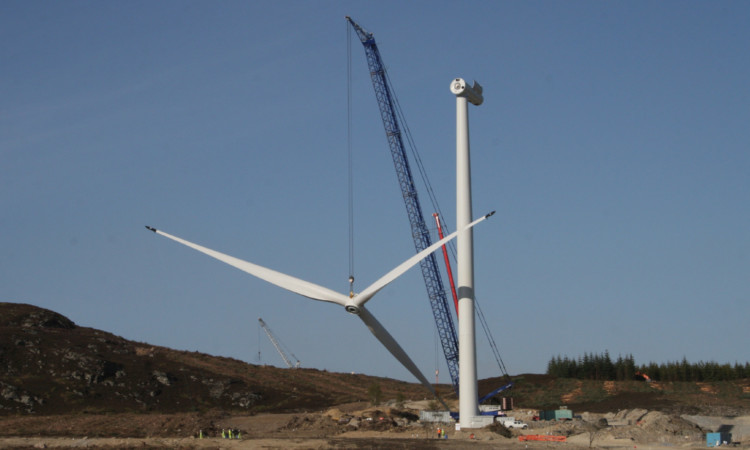SSE Renewables yesterday received the green light for its controversial £300 million Stronelairg windfarm in the Highlands.
The Perth-based developer welcomed the decision by Scottish Ministers to grant consent for the 67-turbine scheme near Fort Augustus in the Great Glen.
Development of the array which will have a maximum power capacity of 242MW, enough to power 114,000 homes has been strongly opposed.
However, those concerns were set aside yesterday as Energy Minister Fergus Ewing gave his backing to the development.
Reduced in scale from the original 83-turbine scheme, it is expected to create 100 construction jobs and provide a total of £30m of economic benefits to the area during its lifetime.
Half of the cash will be used to support local community projects, while £15m has been earmarked for a Highland Sustainable Development Fund.
Mr Ewing, who yesterday knocked back a proposed 21-turbine development in Dumfries and Galloway, said Stronelairg would become a key energy asset.
“Once it is up and running, the windfarm will save thousands of tonnes of carbon dioxide each year, and will be able to produce enough electricity to power thousands of homes in the Highlands.
“As well as bringing benefits to the local community, the Stronelairg windfarm will also benefit the wider Highland region through the provision of a sustainable development fund.
“Windfarms, like Stronelairg, play an important part in helping Scotland reach its target of the equivalent of 100% of electricity demand generated from renewables.”
SSE said an estimated £120m of contracts were expected to arise out of the Stronelairg development, with a myriad of opportunities for Highland and Scottish-wide businesses.
Colin Nicol, lead director of wholesale generation development, said: “SSE is a responsible developer and we have built on the strong community relationships formed historically in the Great Glen as a result of our hydro power generation.
“When planning Stronelairg we worked very closely with these communities and stakeholders to minimise any local impacts, and this includes utilising the existing Glendoe hydro access road infrastructure.
“We are also working with Highland Council and their Development Initiative of the Great Glen group to ensure this project is delivered as smoothly as possible.
“We are keen to ensure that local businesses are afforded as many opportunities as possible during construction, which is exactly what our Open4Business portal is designed to do.”
David Gibson, chief officer for the Mountaineering Council of Scotland, said: “The Scottish Government will publish its latest planning policy on June 23, in which it will lay out the measures by which it aims to protect Scotland’s world-renowned landscape from onshore windfarm developments.
“If Stronelairg is indicative of the value it places on our landscape there seems to be little hope for its future, and for that of the many businesses and thousands of jobs in rural communities which rely on tourists,” he added.
Helen McDade, head of policy for the John Muir Trust, said: “SSE is a powerful multinational company with its HQ in Scotland, and we know this project is worth many hundreds of millions to its shareholders.
“It is unfortunate that SSE’s views seem to hold greater sway over ministers than the opinions of the Scottish Government’s own expert body on the natural environment.
“We are concerned about the wider implications of this decision for the future of wild land across Scotland.”
